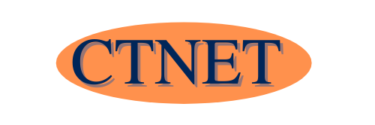In this blog post, I’ll be exploring how I leverage my Zettelkasten to write many of my blog posts, including this very one. While I now incorporate Artificial Intelligence into this process, the AI’s effectiveness hinges on the knowledge already present in my Zettelkasten. It helps to have a good idea of what’s in there!
It’s worth noting that I don’t rely on my Zettelkasten for every blog post. For example, my recent review of Napkin AI didn’t benefit much from it, as my Zettelkasten didn’t contain relevant information.
Let’s begin with a brief introduction to the Zettelkasten method.

What is a Zettelkasten?
A Zettelkasten is a Personal Knowledge Management (PKM) system; a method for capturing thoughts and ideas as notes, with the aim of transforming those ideas into your own personal knowledge.
Furthermore, a Zettelkasten can serve as a tool to externalise your thinking.
The Zettelkasten system recognises three different types of notes which carry out distinct jobs.
- Fleeting note: Created when capturing a thought or idea. Examples include highlights from a book, notes taken during a course, or any thought or idea you’ve jotted down.
- Literature note: Acts as a summary of content you’ve read, watched, or listened to, including relevant details. It serves as an index to any Permanent Notes created from that content, bridging the gap between your Permanent Notes and the source material.
- Permanent note: Atomic in nature, explaining a single idea, thought, or concept that should be linked to other related Permanent Notes. A Permanent Note must always be written in your own words.
Planning and Strategy
As with any project, planning is crucial. Before diving into writing, I define my target audience (in this case, those interested in using a PKM for content creation, perhaps like my past self!). I also outline a promotion strategy, considering channels like Bluesky and Mastodon.
My objective is to share my experiences and help others get the most out of their Zettelkasten. If you’d like a more in-depth look at my planning process, let me know in the comments.
Using my Zettelkasten to Create a Content Layout
Once the planning is complete, I move on to creating a content layout. This acts as a blueprint, ensuring I don’t miss any vital points and providing a structure to build upon.
For posts like this one, which draw heavily on my Zettelkasten, the layout process involves leveraging a Large Language Model with access to my Obsidian vault via the Obsidian co-pilot plugin.
I use the Large Language Model to review my vault and provide feedback on my knowledge of the subject. I then examine its response to identify any gaps. If I spot something missing, I’ll ask a follow-up question to confirm my suspicion, and the AI will usually offer insights from my Zettelkasten to explain the connection.
Finally, I ask the AI to draft the blog post layout based on its responses and the initial plan. This gives me a solid starting point.
Writing My Blog Post
While I leverage Artificial Intelligence for planning and outlining, I don’t use it during the core writing process. One of the main reasons I enjoy writing is that it externalises my thinking, allowing me to truly engage with the material.
This externalisation of thoughts can help identify weaknesses in my understanding, offer new perspectives on familiar topics, and even spark entirely new ideas. That’s why I always write my own notes and the first draft of any blog post.
When writing a blog post, I often draw upon relevant content from my Permanent Notes, adapting it to fit the specific context and audience. This might involve rephrasing sentences, adding new examples, or connecting the ideas to other concepts. This process can even lead to me editing the Permanent Note itself if it improves readability or clarity for future use. It’s a continuous cycle of refinement.
Sometimes, while working with my Permanent Notes, I’ll encounter a link to a related note with an idea worth exploring further, either in the current post or in a future one. These connections are invaluable for expanding on topics and creating a richer, more interconnected body of work.
Ultimately, using content from my Permanent Notes provides a solid framework for my writing, allowing me to focus on crafting a compelling and insightful blog post.
Editing My Post
The final stage before publishing is editing, a crucial step in ensuring clarity and impact. Ideally, I’d like to edit each post over several sessions, allowing me to approach it with fresh eyes each time. However, that’s not always feasible due to time constraints.
Regardless, every post undergoes at least a couple of editing sessions. During these sessions, I focus on:
- Clarity: Ensuring the language is clear, concise, and easy to understand.
- Flow: Checking that the ideas flow logically and smoothly from one paragraph to the next.
- Accuracy: Verifying the accuracy of any facts or claims made in the post.
- Grammar and Spelling: Correcting any grammatical errors or typos.
For the final edit, I use AI to check readability and grammar in UK English. I used to use Grammarly for this purpose, but now I rely on other AI-powered tools.
My aim is always to improve readability and polish the writing without significantly altering the intended meaning or my unique voice.
I perform one last, quick edit on the day I schedule the content for publication on WordPress, just to catch any last-minute errors.
Conclusion
In conclusion, I hope this post has provided you with valuable insights into how you can leverage a Zettelkasten to enhance your blog writing process. Remember, building a robust Zettelkasten takes time and effort, but the rewards – a constant stream of ideas and a deeper understanding of your chosen topics – are well worth the investment.
To stay up-to-date with my latest content and insights, be sure to subscribe to my newsletter!
